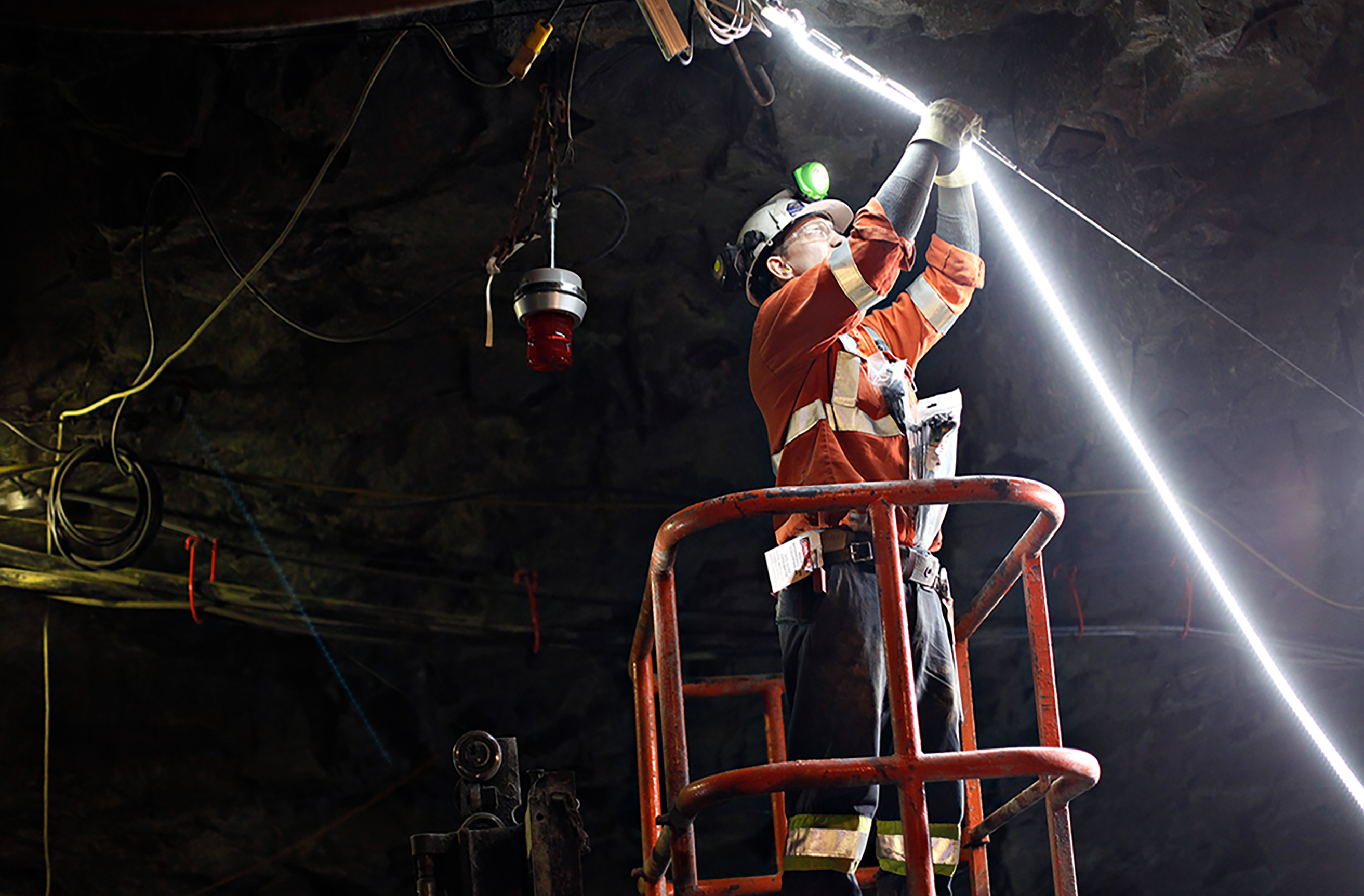Top tips: selecting underground LED strip lighting
The significance of electrical safety in underground settings, such as mining and tunnelling, cannot be overstated. These confined spaces demand lighting solutions that offer efficient lighting and — more importantly — are safe to use within specific environments.
LED strip lights have emerged as a popular choice, due to their adaptability and energy efficiency. However, most LED strip lights are not suitable for hazardous conditions.
MineGlow, an expert in hazardous area LED strip lights, shares five crucial insights to mitigate electrical risks and uphold safety standards when opting for LED strip lights in underground environments.
1. Opt for purpose-built lights
Not all LED strip lights are created equal. It is important to select the appropriate industrial-grade LED strip lights developed and approved for the specific environment in question. There are many variations in product quality and design and a wide range of specifications to meet the electrical certification requirements for different operating zones in mining and tunnelling.
Purpose-built LED strip lights undergo specialised engineering to withstand the harsh conditions and are built to endure vibrations, extreme temperatures, shock and impact. Considerations such as component quality, water and dust resistance, fire retardance, impact resistance, tensile strength, explosion protection and warranty are crucial when selecting LED strip lights.
2. Certifications matter
The nature of underground environments exposes lighting systems to hazardous elements like vapours, gases, extreme temperature and damage, creating severe electrical safety issues if incorrect LED strip lighting is used.
LED strip lights for mining and tunnelling must undergo rigorous testing, ensuring compliance with safety regulations and minimising the risk of electrical hazards.
Check the certifications to ensure the LED strip lights selected are correctly certified to perform in harsh and hazardous conditions. Look for LED strip lights that have been independently tested and meet the highest local and international safety standards.
3. Check the IP ratings
Ingress Protection (IP) ratings play a pivotal role in safeguarding LED strip lights against the environmental elements prevalent in hazardous environments. Dust and moisture will compromise the safety and functionality of lighting systems, leading to potential electrical faults or short circuits.
Ensuring the LED strip lights have the right IP rating for the operating environment significantly contributes to electrical safety, with higher ratings indicating increased resistance to dust and moisture.
4. Choose low-voltage options
When operating in hazardous environments, opt for low-voltage LED strip lights. These lights consume less power and operate at lower voltage levels, reducing the risk of electrical faults, shocks and short circuits. This reduction in voltage levels creates a safer working environment, particularly in spaces where hazardous gases or flammable materials are present.
Low-voltage LED strip lights are versatile and generally suitable for various applications within hazardous environments. Whether in mining tunnels, confined spaces or areas with specific safety requirements, these lights can be tailored to meet diverse lighting needs without compromising safety.
5. Prioritise component quality
The quality and reliability of components significantly impact the performance and safety of LED strip lights. Choosing lights made with high-quality, durable materials is crucial to ensure they operate reliably within harsh and hazardous environments.
Assessing the reliability of LED chips, circuit boards and especially the encapsulating materials, like silicon and PVC, assists with prolonged and safe operation. Understanding the construction and materials used in LED strip lights is key to ensuring resilience against environmental factors, enhancing overall electrical safety, and reducing the chance of failure and high maintenance costs.
Following these proactive measures will minimise potential electrical hazards, vastly reduce maintenance downtime and create a safer working environment. Ultimately, a well-illuminated work area using reliable ‘fit for purpose’ lighting leads to improved safety and productivity for all involved.
As published in Safety Solutions on 17 Jan 2024



